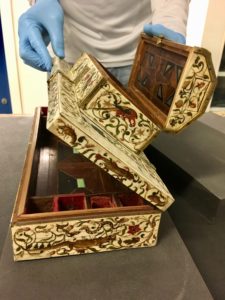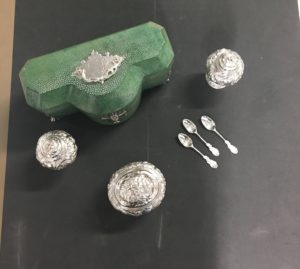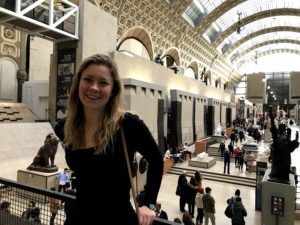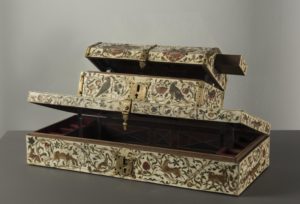
In writing this last blog post, I’m bringing my Illuminating Objects internship to a close; the ivory box is now on display at the Science Museum!
On 5th June before the Science Museum opened for the day, we installed the box in its new home on the second floor of the museum, where it’ll stay until early 2020. The installation process may sound simple – how difficult can it be to put the box in place? But it actually requires the expertise and help of a lot of different people, including the registrars, designers, gallery services, conservators, exhibition project managers, curators, and the marketing teams to take some photos!
A full conservation report needs to be done right before the box is installed, so that there is a record of exactly what condition it’s in. Then another one will be done afterwards to make sure that nothing has changed.
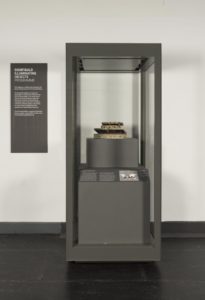
There was also a lot of work that went on behind the scenes before we could install it. The paint and the ivory of the casket are sensitive to bright light, because the paint could fade, and the ivory could become discoloured and brittle under harsh lights. The lighting both inside and outside the case needed to be measured and adjusted so that it wasn’t too bright, and then once we had it installed, we changed the lights again slightly so that the box would be well-lit.
The text panels also had to be put up, and then finally, the box had to be positioned. The positioning took a lot of tweaks because we wanted all four sides to be visible—some of the most beautiful paintings, including the bird of paradise, are on the back. It had to be centred, the mounts had to be put in place to keep the box open, and we had to decide on the angle to show it at. Then at last, we all stepped back to take a look, and it looked perfect!
It actually looked even better than I expected: the box has a secret, spring-loaded drawer in one of the sides, but it was stuck closed. But just a few days before installing, The Courtauld’s chief conservator Graeme Barraclough figured out how to get it open, so we could show it off! It’s not such a ‘secret’ drawer anymore, now that it’s on display. But showing the box with that drawer open makes me even more curious about what the box was originally made to hold.
The end of my internship with The Courtauld Gallery is bittersweet—even after all of the research that went into this project, I probably could have kept researching the ivory box for many more months! But I’m also glad that now it’s on display for many more people to see it.
You can find the casket on Level 2 of the Science Museum, between Mathematics: The Winton Gallery and Information Age.

